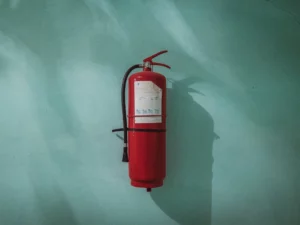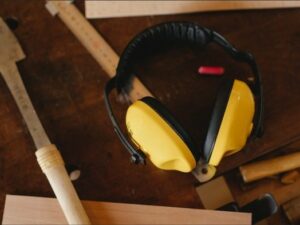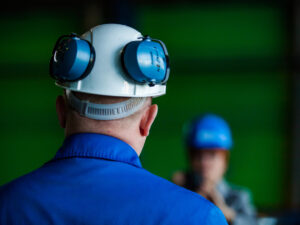
The Hidden Danger of Dust: Understanding Risks in Industrial Environments
In industrial environments like manufacturing and construction, dust is more than just an inconvenience. Dust particles in the air can be harmful to workers. This is especially true when they contain dangerous materials like silica, asbestos, or metal compounds.
These particles are often too small to see. This makes it easy to inhale them without noticing. They can then enter the respiratory system without detection. Over time, this can lead to significant health issues, including diseases like silicosis, asthma, and even chronic lung conditions.
Long exposure to dust can harm individual health. It also reduces overall productivity in the workplace. Dust can settle on machinery and clog ventilation systems, causing equipment breakdowns and leading to costly repairs and downtime.
Additionally, being exposed to dust can lower employee morale and lead to more sick days. Workers often deal with symptoms and skin irritation caused by dust particles.
Addressing dust control in industrial settings is therefore essential. It helps protect workers’ health. It also helps companies meet rules and lower liability risks.
Using good dust control methods, proper ventilation, and regular air quality checks creates a safer work environment. This also helps make operations more productive and efficient. Investing in dust control is ultimately a commitment to long-term safety and business success.
Health Risks Posed by Dust
Dust in industrial environments can contain hazardous materials, including silica, asbestos, and toxic metals. These particles are small enough to be inhaled deeply into the lungs, where they can cause chronic health problems.
The most common and serious effects of dust exposure include:
- Silicosis: Caused by inhaling crystalline silica dust, this lung disease creates inflammation and scarring in the lungs, leading to breathing difficulties. Silicosis is a progressive and often permanent condition that can be life-threatening.
- Chronic Obstructive Pulmonary Disease (COPD): Exposure to dust can contribute to COPD, a condition that restricts airflow and makes breathing difficult over time. COPD is often a result of long-term dust exposure in industries like mining, cement production, and metalworking.
- Asthma and Allergies: Dust can also trigger or worsen asthma and other allergies. Industrial dust, especially when combined with chemicals or toxins, can lead to symptoms that affect both health and productivity.
The Importance of Dust Control in the Workplace
Understanding the risks posed by dust is the first step toward implementing effective control measures. Dust control goes beyond just keeping surfaces clean. In industrial settings, managing dust is crucial for:
- Worker Safety: Preventing illness is essential for protecting employees and creating a healthy workplace.
- Regulatory Compliance: Occupational health and safety regulations often require strict control of dust levels in industries where hazardous materials are present. Non-compliance can lead to legal consequences and penalties.
- Equipment Longevity: Dust can also damage machinery, causing clogs, increased wear and tear, and more frequent breakdowns, all of which add to maintenance costs and reduce efficiency.
Dust Suppression Systems
One of the best ways to control dust is with dust suppression systems. These systems capture and contain airborne particles. These systems can include:
- Water Sprays: Using water to dampen dust particles is a common method in industries like construction and mining. Water reduces the airborne particles by binding them to surfaces, preventing them from spreading.
- Dust Collectors: Installed near dust-generating equipment, dust collectors trap and filter out particles before they enter the air. These systems are particularly effective in manufacturing environments with continuous dust production.
- Local Exhaust Ventilation (LEV): LEV systems capture dust directly at its source, ensuring particles are removed from the air before they spread throughout the facility. LEVs are often used in processes like grinding, cutting, and welding, where dust production is localised.
Personal Protective Equipment (PPE)
While dust suppression systems are essential, PPE provides an additional layer of protection for workers. Appropriate PPE for dust-prone environments includes:
- Respirators and Masks: Respirators filter out dust particles and are essential in environments where exposure to harmful dust is high. Workers should be trained in how to properly fit and use these masks.
- Protective Eyewear: Dust particles can irritate the eyes, so protective goggles or safety glasses are often required in areas with high dust levels.
- Gloves and Coveralls: Depending on the type of dust, gloves and coveralls can protect workers from skin irritation and prevent dust from spreading to other areas.
Regular Air Monitoring and Dust Assessments
To maintain safe air quality, regular monitoring of dust levels is crucial. Dust assessments help find areas in the facility where dust levels may be too high. They allow for focused improvements in ventilation and dust control measures.
Apex Environmental offers specialised air quality monitoring and dust assessment services to support businesses in managing dust risks effectively. Apex uses both qualitative and quantitative assessments to find specific dust sources. This helps organisations create strategies that meet occupational health standards and improve overall environmental health.
Employee Training and Awareness
A key part of dust control is making sure employees understand the risks of dust exposure. They also need to know how to protect themselves. Regular training sessions can empower workers with knowledge about:
- Identifying High-Risk Areas: Employees should be able to recognise areas in the facility where dust levels are higher and know the safety protocols for those zones.
- Using PPE Properly: Proper use and maintenance of PPE are essential for it to be effective. Training ensures employees understand how to fit, wear, and maintain respirators and other protective gear.
- Recognising Early Symptoms: Teaching employees to identify the early signs of respiratory issues, such as shortness of breath or persistent cough, can encourage early medical intervention and prevent further complications.
Maintaining Compliance with Health Regulations
Industrial settings with dust-producing processes are subject to regulatory guidelines that dictate acceptable dust levels and protective measures. Apex Environmental can assist businesses in navigating these regulations by offering tailored dust control solutions and compliance support.
Following these standards is not just a legal requirement. It is also an important step to protect human health and lower liability.
Conclusion
Dust might seem like a small problem, but in industrial settings, it poses a serious health risk. This risk requires careful management. By understanding the risks of dust and using dust control systems, companies can protect their workers.
They should also provide personal protective equipment (PPE), monitor air quality, and train employees. This approach helps create a safer workplace.
Apex Environmental helps organisations with dust control. We conduct air quality assessments and assist businesses in meeting regulatory standards. By managing dust, businesses can protect their employees’ health and create a safe, productive workplace.








